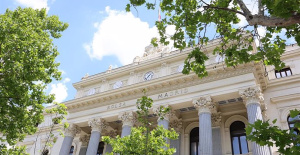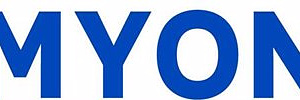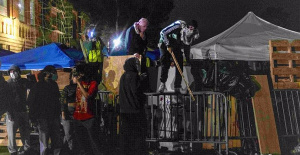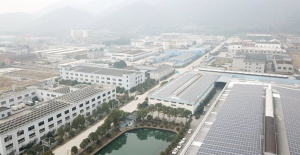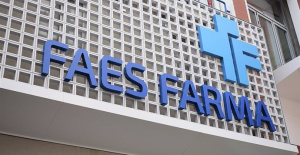MADRID, 26 Jul. (EUROPA PRESS) -
The Council of Ministers will approve this Tuesday the new contribution system for the self-employed based on real income, which will have a transition period of nine years, until 2032, and will begin to be applied from January 2023, with 15 installments of quotas that will go from 230 euros to 500 euros and will vary until 2025, depending on the net income of self-employed workers.
After months of negotiation between the Ministry of Inclusion, Social Security and Migration and the three main associations, the minister of this portfolio, José Luis Escrivá, will take to the Council of Ministers a text of more than 100 pages, the result of the agreement reached this week, which will be approved by royal decree-law.
The new contribution system for real income will put an end to the "great anomaly" of the current regime, as Escrivá has described it, and will comply with recommendations 4 and 5 of the Toledo Pact, as well as with component 30 of the Recovery Plan, Transformation and Resilience (PRTR).
The Minister of Inclusion, Social Security and Migration has insisted that the future regime goes beyond the implementation of a contribution system based on real income, since it also intends to improve the pensions of self-employed workers, which until now were a 43% lower than those of wage earners, and guarantee their social benefits.
This difference between the pensions of the self-employed and employees, of about 600 euros per month, is due to the fact that 84% of those affiliated to the Special Scheme for Self-Employed Workers (RETA) contribute for the minimum base, of about 300 euros, and it affects your retirement, according to Social Security data.
With the new contribution system, it is expected that one in two self-employed workers will have a lower quota than the current one, while 25% will contribute more and 25% will contribute less.
The Ministry, the Association of Self-Employed Workers (ATA), the Union of Professionals and Self-Employed Workers (UPTA) and the Union of Associations of Self-Employed Workers and Entrepreneurs (Uatae) have agreed on a system of 15 sections for 2023, 2024 and 2025.
The self-employed will have the possibility of changing sections every two months, with a total of six changes per year, to adapt their contribution to the income forecasts at each time of the year and their professional activity.
In 2023, the quota for a self-employed person with net income (income minus expenses) equal to or less than the Minimum Interprofessional Salary will be 230 euros. In 2024, it will be reduced to 225 and in 2025, it will pay 200 euros.
For those with net returns of more than 1,300 euros and less than or equal to 1,500 euros, and more than 1,500 euros and less than or equal to 1,700 euros, the fee will remain at 294 euros for the three years.
While in the lower yield brackets the fee also decreases between 2023 and 2025, from net yields above 1,700 euros, the fee increases throughout those three years.
Thus, a self-employed person who presents net returns above 3,620 euros and up to 4,050 euros, or equal to that amount, (tranche 13) will pay 100 euros more in installment between 2023 and 2025. In 2023, he will begin to pay 390 euros, will rise at 400 euros in 2024 and 490 in 2025.
In the last section, the fifteenth, are all the self-employed with net income of more than 6,000 euros. His quota for 2023 will be 500 euros, it will rise to 530 euros the following year and will reach 590 euros in 2025.
The additional provisions of the royal decree-law that is approved on Tuesday specify that, after those three years, the partners will have to agree on the sections for the coming years, until 2032.
The new system also attends to another of the requests of the self-employed, the deduction of expenses that are difficult to justify, among which Social Security gives the example of computers, the rental of premises or the purchase of supplies. This deduction will be 7% for the self-employed and 3% for self-employed companies.
In this way, a self-employed person who presents an average income of 900 euros and expenses for the exercise of his activity of 185 euros will have net income of 715 euros, the result of the subtraction of income and expenses. From that amount, 7%, equivalent to 50.05 euros, may be deducted. The final net returns would be 664.95 euros (715-50.05), so the self-employed would pay a fee of 230 euros per month, being within the first tranche, with returns equal to or less than 670 euros.
The flat rate of the current RETA is also integrated into the new model, although it will be called a reduced rate for the self-employed who start their activity and will be 80 euros per month for twelve months for all new self-employed.
After that period, this reduced quota will only be extended for the self-employed who have not managed to get their income off the ground and remain below the Minimum Interprofessional Salary (SMI). For the rest, the fee corresponding to their contribution bracket will be applied according to their net income.
Escrivá explained this Thursday in the Congress of Deputies that the flat rate, as it is, presents "chiaroscuros" and referred to a report by the Independent Authority for Fiscal Responsibility (AIReF), prepared when he was its president, in which It was warned that this special quota did not guarantee the survival of the businesses of the self-employed who had started their projects with this tariff.
Sources from the Ministry of Inclusion, Social Security and Migration have indicated that the reduced quota for the start of activity is universal and general, and its existence will remain as part of the new system and will not be exclusive to the transitional period of nine years.
Social Security has pointed out that the current benefit system did not meet its qualitative or quantitative objectives. In 2019, less than 1,500 workers had access to the benefit for cessation of activity for the group of self-employed workers.
Within the partial cessation, this figure is established for the self-employed with workers, for the self-employed without workers and due to force majeure. None of them will demand to unsubscribe from the RETA or the closure of the establishment. The benefit will be the equivalent of 50% of the regulatory base and will be compatible with another activity, for a period of between four months and two years.
As for the RED Mechanism, in the case of the cyclical it must be approved by the Council of Ministers in the face of an unfavorable general macroeconomic situation. To qualify for this benefit, the self-employed person must present a drop in income of 75%, income not exceeding the Minimum Interprofessional Salary (SMI) and affecting 75% of the workforce. The cyclical Red Mechanism offers a benefit of 50% of the regulatory base for up to one year, does not require cessation of activity and a payment of 50% of the contribution.
The sectoral RED Mechanism will also have to be approved by the Council of Ministers when there are permanent changes in a sector that generate requalification and professional transition needs. The requirements will be a drop in income of 50% or 75% if there are no workers, income may not exceed the SMI, 75% of the workforce will be affected and there must be an investment project and retraining plan. The protection offered by this mechanism is the single payment of 70% of the regulatory base and the payment of 50% of the contribution.

 Exploring Cardano: Inner Workings and Advantages of this Cryptocurrency
Exploring Cardano: Inner Workings and Advantages of this Cryptocurrency Seville.- Economy.- Innova.- STSA inaugurates its new painting and sealing hangar in San Pablo, for 18 million
Seville.- Economy.- Innova.- STSA inaugurates its new painting and sealing hangar in San Pablo, for 18 million Innova.- More than 300 volunteers join the Andalucía Compromiso Digital network in one month to facilitate access to ICT
Innova.- More than 300 volunteers join the Andalucía Compromiso Digital network in one month to facilitate access to ICT Innova.-AMP.- Ayesa acquires 51% of Sadiel, which will create new technological engineering products and expand markets
Innova.-AMP.- Ayesa acquires 51% of Sadiel, which will create new technological engineering products and expand markets Sexist violence: 1,254 women murdered in 20 years, 10 in 2024, and 250 in the last five years
Sexist violence: 1,254 women murdered in 20 years, 10 in 2024, and 250 in the last five years The PP joins Sumar and overthrows in Congress the PSOE law to prohibit pimping
The PP joins Sumar and overthrows in Congress the PSOE law to prohibit pimping Expel the Argentine ambassador or break relations, the following options for the Government in the crisis with Milei
Expel the Argentine ambassador or break relations, the following options for the Government in the crisis with Milei Milei hopes that Sánchez's "totalitarianism" will not prevent him from returning to Spain in June
Milei hopes that Sánchez's "totalitarianism" will not prevent him from returning to Spain in June How Blockchain in being used to shape the future
How Blockchain in being used to shape the future Not just BTC and ETH: Here Are Some More Interesting Coins Worth Focusing on
Not just BTC and ETH: Here Are Some More Interesting Coins Worth Focusing on ITI works on an international project to eradicate production defects
ITI works on an international project to eradicate production defects The ITE promotes a project to recycle lithium batteries completely and reduce their environmental impact
The ITE promotes a project to recycle lithium batteries completely and reduce their environmental impact 'Fallero hologram: the art of the bow', the UPV and Telefónica pioneer the use of VR technology applied to training
'Fallero hologram: the art of the bow', the UPV and Telefónica pioneer the use of VR technology applied to training UA researchers develop a device to desalt food products through electrodialysis
UA researchers develop a device to desalt food products through electrodialysis A million people demonstrate in France against Macron's pension reform
A million people demonstrate in France against Macron's pension reform Russia launches several missiles against "critical infrastructure" in the city of Zaporizhia
Russia launches several missiles against "critical infrastructure" in the city of Zaporizhia A "procession" remembers the dead of the Calabria shipwreck as bodies continue to wash up on the shore
A "procession" remembers the dead of the Calabria shipwreck as bodies continue to wash up on the shore Prison sentences handed down for three prominent Hong Kong pro-democracy activists
Prison sentences handed down for three prominent Hong Kong pro-democracy activists ETH continues to leave trading platforms, Ethereum balance on exchanges lowest in 3 years
ETH continues to leave trading platforms, Ethereum balance on exchanges lowest in 3 years Investors invest $450 million in Consensys, Ethereum incubator now valued at $7 billion
Investors invest $450 million in Consensys, Ethereum incubator now valued at $7 billion Alchemy Integrates Ethereum L2 Product Starknet to Enhance Web3 Scalability at a Price 100x Lower Than L1 Fees
Alchemy Integrates Ethereum L2 Product Starknet to Enhance Web3 Scalability at a Price 100x Lower Than L1 Fees Mining Report: Bitcoin's Electricity Consumption Declines by 25% in Q1 2022
Mining Report: Bitcoin's Electricity Consumption Declines by 25% in Q1 2022 Oil-to-Bitcoin Mining Firm Crusoe Energy Systems Raised $505 Million
Oil-to-Bitcoin Mining Firm Crusoe Energy Systems Raised $505 Million Microbt reveals the latest Bitcoin mining rigs -- Machines produce up to 126 TH/s with custom 5nm chip design
Microbt reveals the latest Bitcoin mining rigs -- Machines produce up to 126 TH/s with custom 5nm chip design Bitcoin's Mining Difficulty Hits a Lifetime High, With More Than 90% of BTC Supply Issued
Bitcoin's Mining Difficulty Hits a Lifetime High, With More Than 90% of BTC Supply Issued The Biggest Movers are Near, EOS, and RUNE during Friday's Selloff
The Biggest Movers are Near, EOS, and RUNE during Friday's Selloff Global Markets Spooked by a Hawkish Fed and Covid, Stocks and Crypto Gain After Musk Buys Twitter
Global Markets Spooked by a Hawkish Fed and Covid, Stocks and Crypto Gain After Musk Buys Twitter Bitso to offset carbon emissions from the Trading Platform's ERC20, ETH, and BTC Transactions
Bitso to offset carbon emissions from the Trading Platform's ERC20, ETH, and BTC Transactions Draftkings Announces 2022 College Hoops NFT Selection for March Madness
Draftkings Announces 2022 College Hoops NFT Selection for March Madness















